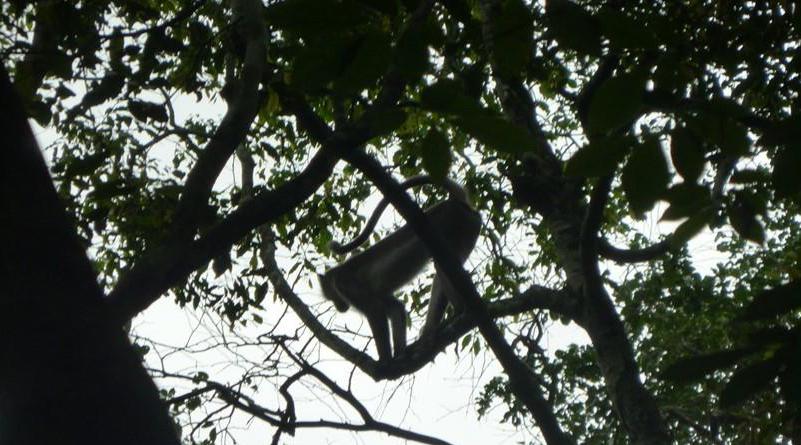Tchinyo Coulibaly
The project focus on the white-naped mangabey (Cercocebus lunulatus) an endangered species living in Comoé National Park and is endemic to three countries in West Africa. Comoé National Park is the most important site sheltering the species in the world and is the only protected area in Côte d’Ivoire where this species co-occurs with white-thighed colobus (Colobus vellerosus) which currently listed as Critically Endangered species by the IUCN Red List. Unfortunately, this Park experiences significant anthropogenic pressures, especially poaching, artisanal gold mining activities, habitats fragmentation and degradation, which increasingly threaten the survival of this species in its greatest last refuge. Updated information on this species populations in the park are important to develop sustainable strategies and management plan to ban such illegal activities.

White-napped mangabey adult male in Afraegle oaniculata tree in Comoé National Park. © Couibaly Tchinyo, 23rd July 2021.
Therefore, the main aim of this project is to assess the major threats factors that influence the current distribution and likely to directly impact the viability of the white-naped mangabey populations and their habitats in the park, which will enable us to find a priority site to implement sustainable conservation actions targeting the species.
Our aim objectives are: (i) determine the spatial distribution of white-naped mangabey populations in the park; (ii) describe the ecological and anthropogenic factors that influence this distribution; (iii) describe the quality of habitats in order to assess their viability and lastly; (iv) determine the populations viability via assessing the relationships between species and the local communities living around the park. To reach these aims, we will use reconnaissance survey (recce) and camera trap methods to collect field data and interview with key actors such as local community leader, ecoguides, hunters and park manager’s staff.